Tips for Using a Rollator Walker
Mar 13, 2025
A rollator walker is a fantastic mobility aid that helps you stay active and independent. Whether you’re using it for the first time or just looking for tips to improve your experience, this guide will help you get the most out of your rollator walker.
1. Choosing a Right Rollator Walker
Before you start using a rollator, make sure you have the right one for your needs. Here are some key factors to consider:
Wheel Size: Larger wheels (8 inches or more) work better for outdoor use, while smaller wheels are great for indoor use.
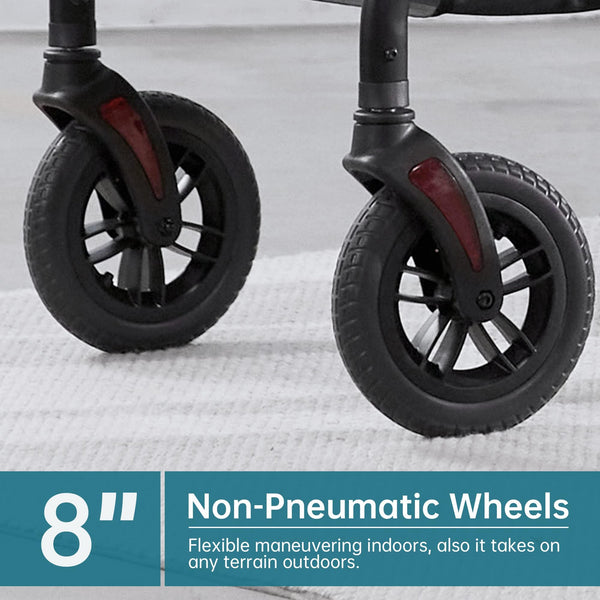
KLD-9218 ELENKER All-Terrain Rollator Walker 8”
Seat Height & Comfort: If your rollator has a seat, ensure it’s at a comfortable height for resting.
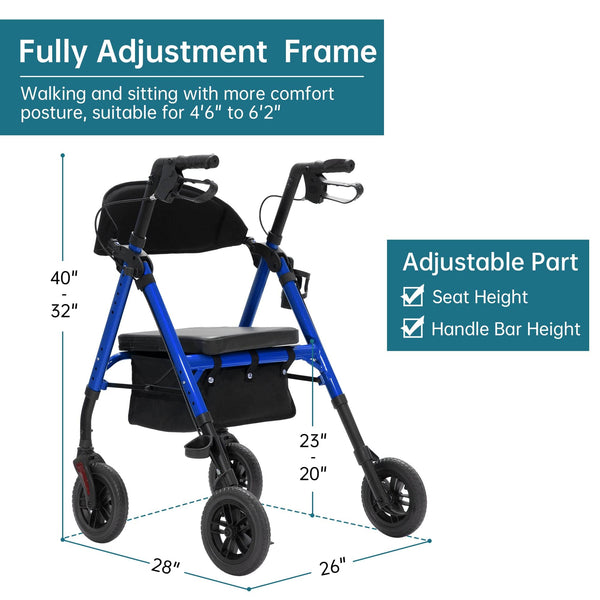
KLD-9218 ELENKER All-Terrain Rollator Walker with adjustment frame
Weight Capacity: Check the manufacturer’s weight limit to ensure the walker supports you safely.
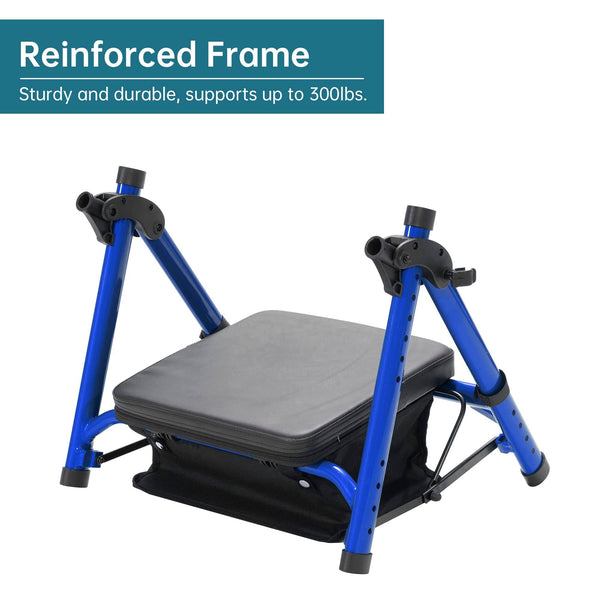
KLD-9218 ELENKER All-Terrain Rollator Walker support up to 300lbs
Brakes: Test the brakes to make sure they engage smoothly and hold securely.
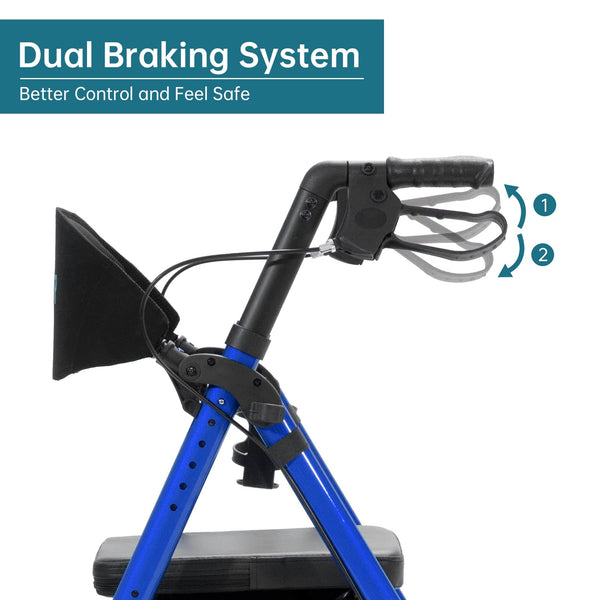
KLD-9218 ELENKER All-Terrain Rollator Walker with Dual Brakes
Foldability: If you need to store or transport your rollator, choose one that folds easily.
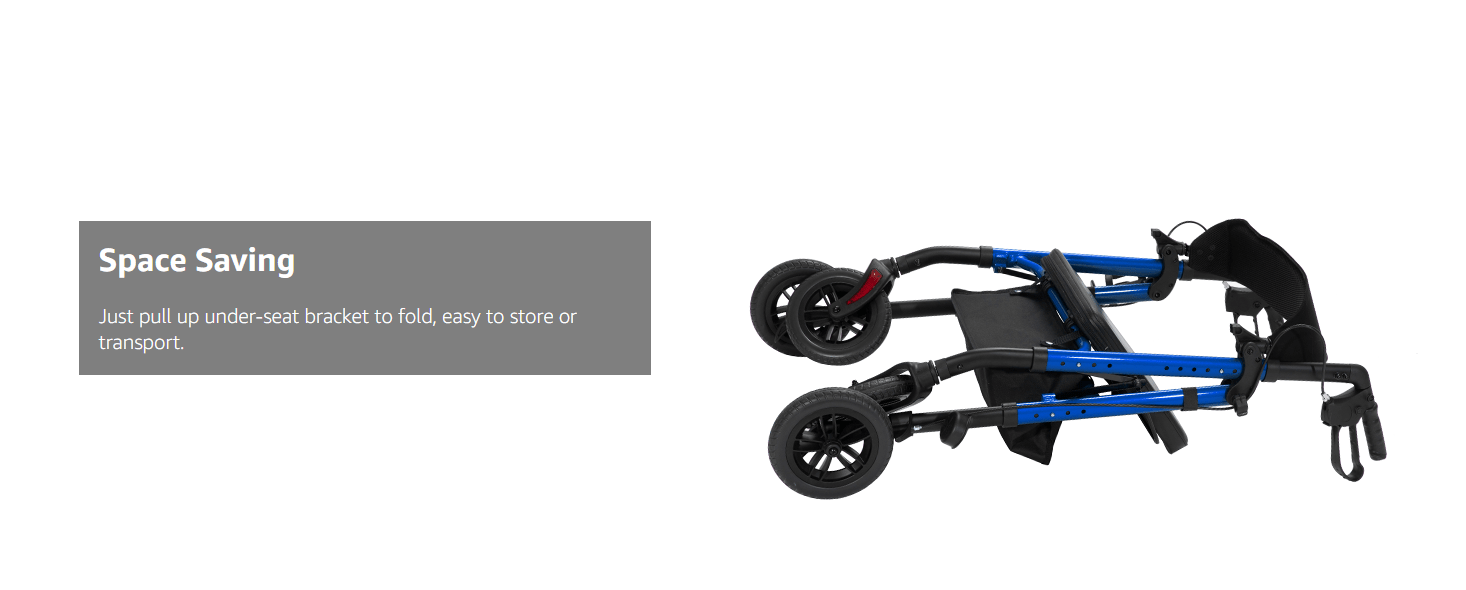
2. Adjusting the Rollator for Proper Fit
A well-fitted rollator can improve comfort and safety. Follow these steps to adjust yours:
Handle Height: Stand up straight and let your arms hang naturally at your sides. Adjust the handles so they align with your wrists.
Seat Height: When sitting, your feet should touch the ground comfortably.
Brake Cables: Make sure they aren’t too loose or too tight.
3. Walking with a Rollator
Using a rollator is different from using a traditional walker. Here’s how to walk safely:
Push, Don’t Pull: Keep a firm grip on the handles and push the rollator slightly ahead of you as you walk.
Walk Upright: Try to maintain good posture and avoid hunching over the walker.
Step Inside the Frame: Avoid stepping too far behind the rollator. Your body should be centered between the handles.
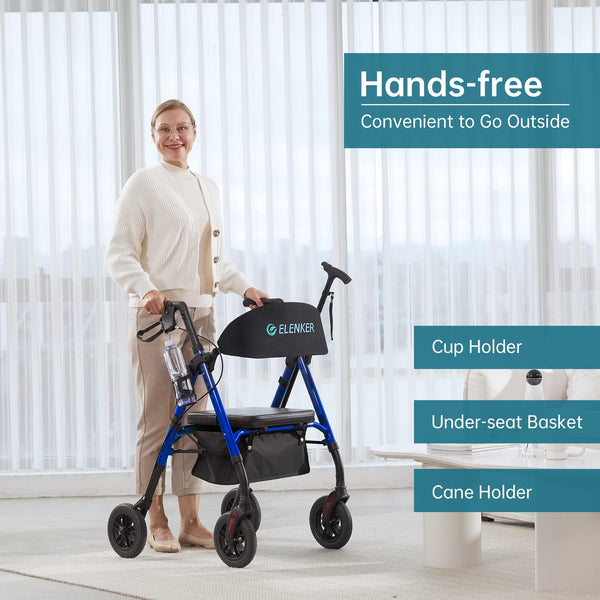
Take Your Time: Walk at a steady pace and avoid rushing.
4. Using the Brakes Correctly
Brakes are essential for safety. Follow these tips to use them properly:
Engage Brakes When Sitting: Before sitting on the rollator seat, always lock the brakes to prevent it from rolling.
Use Brakes on Slopes: If you’re going downhill, engage the brakes lightly to control your speed.
Test Brakes Regularly: Make sure they work properly before each use.
How to use Elenker Upright Walker
5. Sitting and Standing Up Safely
Your rollator’s seat can be a great place to rest, but it’s important to sit and stand safely:
Before Sitting:
Lock the brakes.
Turn around so your back is facing the seat.
Slowly lower yourself using the handles for support.
Before Standing Up:
Make sure the brakes are still locked.
Push up from the seat using both hands.
Once balanced, grab the handles before walking.

Elenker Bariatric Rollator Walkers
6. Navigating Different Terrains
Your rollator can handle different environments, but here’s how to adjust your approach:
Indoors:
Be mindful of rugs, cords, and furniture.
Use a rollator with smaller wheels for tight spaces.
Outdoors:
Use a rollator with larger wheels for better stability.
Watch out for cracks, uneven sidewalks, and gravel.
Curbs and Steps:
Approach curbs head-on.
Use ramps when possible.
Ask for assistance if needed.
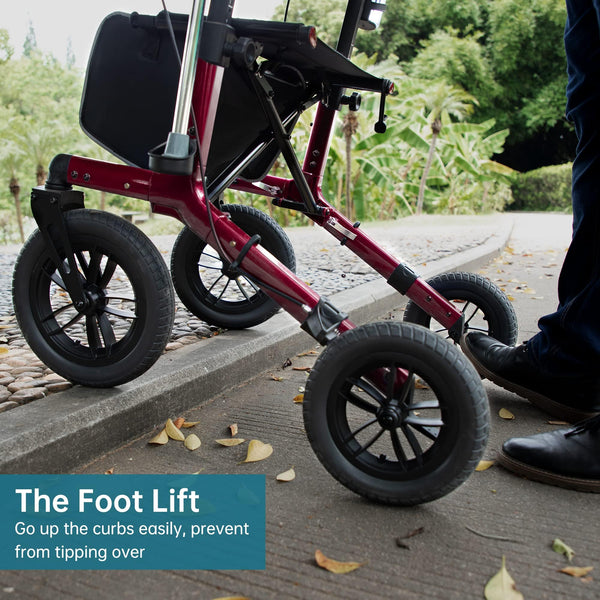
Elenker All-terrain Rollator Walker
7. Transporting and Storing Your Rollator
If you need to take your rollator in a car or store it, follow these tips:
Folding the Rollator:
Most rollators fold by pulling the seat up or using a release lever.
Secure it properly in a vehicle to prevent movement.
Storing Your Rollator:
Keep it in a dry place to prevent rust.
Avoid storing it in direct sunlight for long periods.

8. Maintaining Your Rollator
A well-maintained rollator lasts longer and keeps you safe:
Check the Brakes: Ensure they work properly and adjust them if needed.
Inspect the Wheels: Look for wear and tear.
Clean Regularly: Wipe down the frame and seat to keep it in good condition.
Tighten Bolts and Screws: Make sure all parts are secure.
9. Common Mistakes to Avoid
Even experienced rollator users can make mistakes. Here’s what to watch out for:
Leaning Too Much on the Handles: Rollators are not meant for full weight support.
Walking Too Far Behind the Rollator: Always stay within the frame for better balance.
Not Locking the Brakes Before Sitting: This can cause the rollator to roll away unexpectedly.
Ignoring Maintenance: Regularly check for loose parts and worn-out brakes.
10. When to Seek Help
If you experience any of the following, it may be time to seek professional advice:
Pain While Using the Rollator: Adjustments may be needed.
Difficulty Controlling the Rollator: The brakes may need repair.
Wear and Tear Beyond Repair: It may be time for a new rollator.
A rollator walker can be a great tool to help you stay mobile and independent. By following these tips, you can ensure a safer and more comfortable experience. If you’re ever unsure about your rollator’s fit or function, don’t hesitate to ask a healthcare professional for guidance. Stay safe and happy walking!






